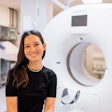A savvy practice administrator once confided to me that achieving any type of management agreement among radiologists was like herding cats: it could be done, it just wasn't easy.
Steering information from disparate RIS and PACS products throughout an enterprise has historically presented a similar challenge for IT system administrators: it can be done, it just hasn't been easy.
One country that has tackled the challenge is Norway. The regional health authority of western Norway is comprised of four local trusts that deliver healthcare from university facilities to rural clinic settings among the country's fjords and islands. In 2003, it initiated the western Norwegian teleradiology project to improve the way in which radiology exams could be retrieved across the entire region. In the process, both management and technology hurdles were overcome.
According to Dr. Aslak Aslaksen, head of the department of radiology at Haukeland University Hospital in Bergen, Norway, and the teleradiology initiative's leader, the project's cultural and political concerns required as much skill and finesse to address as solving the technology interoperability issues.
"Among the challenges at the start of the project was disagreement and rivalry between two university hospitals in the regional trust," Aslaksen said in a presentation at the 2007 European Congress of Radiology (ECR) in Vienna.
That was but one of the obstacles that the project leaders had to address. When the initiative began, there was no international profile for sharing images and patient information, Aslaksen said. During the course of the project, the Integrating the Healthcare Enterprise (IHE) developed the cross-enterprise document sharing for imaging (XDS-I) integration profile, which was fortuitous because each local trust had implemented RIS and PACS products from different vendors.
The XDS profile proposes architecture based on a central registry that holds metadata information describing published documents residing in one or multiple repositories. The XDS-I profile specifies sharing of imaging "documents" such as radiology images and reports; it presents a solution for sharing imaging documents based on XDS and by sharing, locating, and accessing DICOM instances from their original local sources, according to IHE.
The project leaders quickly embraced the XDS-I integration profile as a solution for the teleradiology initiative. However, the organizational and political issues among the radiology stakeholders in the trust could not be so easily addressed, Aslaksen said.
"The radiologists at the university hospitals feared a higher workload due to second opinion and night calls from smaller departments," he said. "The radiologists at the smaller facilities feared a decline in competence because the interesting cases could be lost to the experts at the university hospitals. In addition, they also feared a decline in salary as wages are linked to the number of hours on call."
Aslaksen met the cultural and political concerns head on by creating a project group staffed with radiology leaders from the local trusts, as well as representatives from patient organizations and workers' unions. The group had multiple meetings with documented minutes of the proceedings and issued a final report of its deliberations.
The multiple meeting formats, as well as the open disclosure of the group's discussions, served to create an atmosphere of collaboration and understanding among the region's radiology stakeholders, according to Aslaksen. He said that the result has been agreements on a variety of issues, including on-call cooperation between neighboring hospitals in Bergen, a neuroradiology duty serviced by a university hospital, a model for reimbursement among the four local trusts within the regional trust, the establishment of a common reading and reporting center, and a regional radiology forum.
"The implementation of a teleradiology network is an organizational and cultural project," Aslaksen said. "One should not underestimate the cultural, economic, and organizational obstacles when implementing a teleradiology service between departments and trusts in a public healthcare setting."
By Jonathan S. Batchelor
AuntMinnie.com staff writer
April 11, 2007
Related Reading
MGH teleradiology plan rankles Rhode Island radiologists, April 3, 2007
Survey says: Domestic teleradiology preferred by referrers, November 29, 2006
Multiple industry trends increase demand for subspecialty radiology, October 5, 2006
Offshoring, teleradiology, and the future of our specialty, March 20, 2006
Russian teleradiology network meets needs, exceeds expectations, March 6, 2006
Copyright © 2007 AuntMinnie.com


















